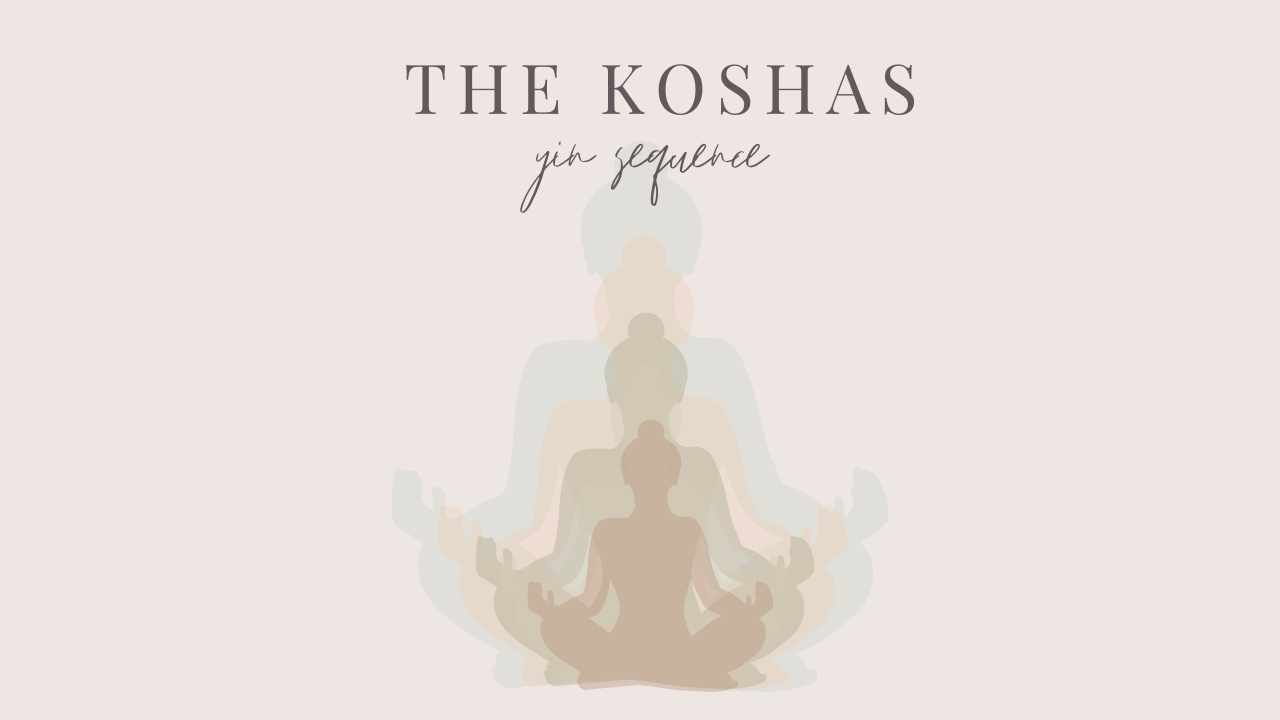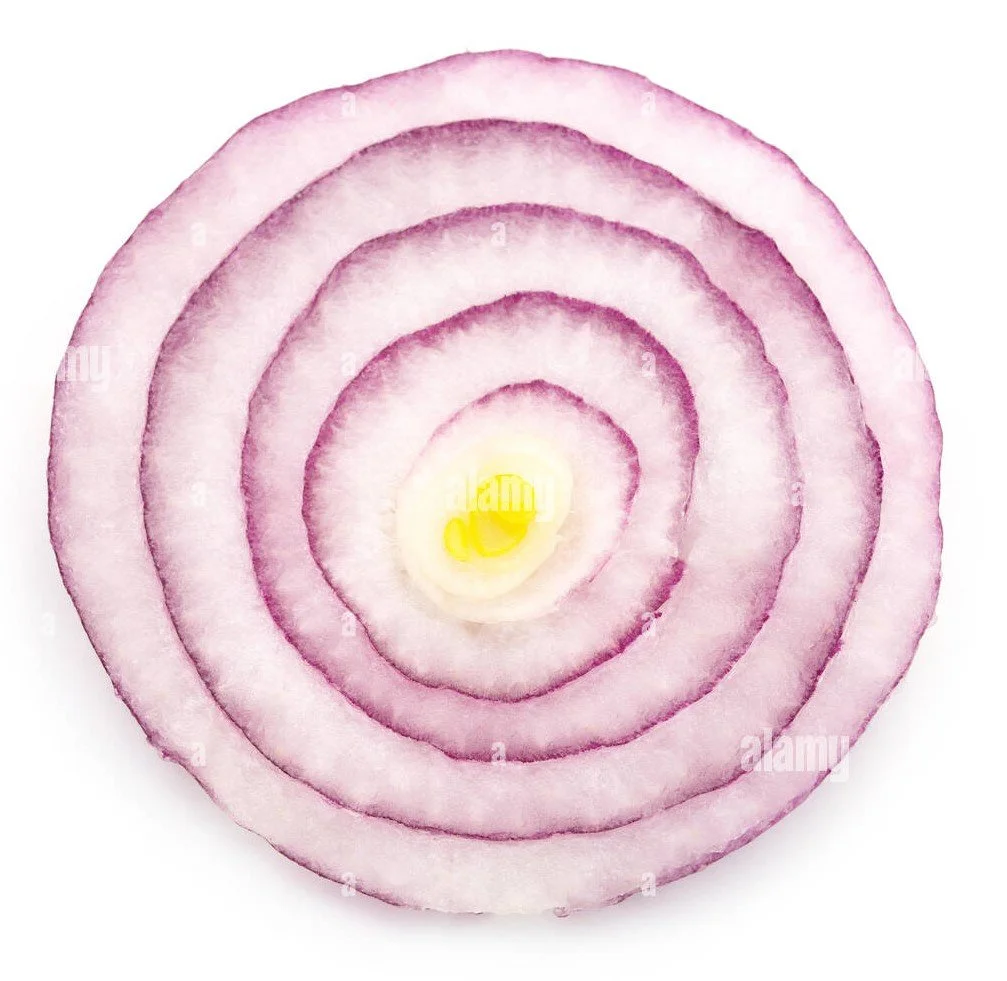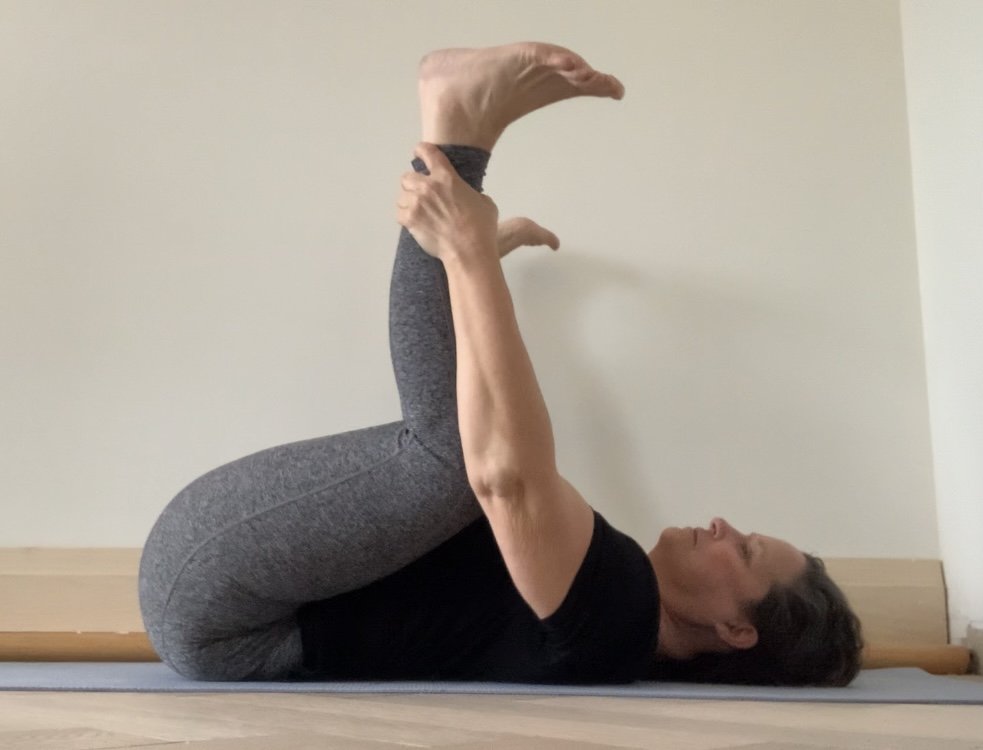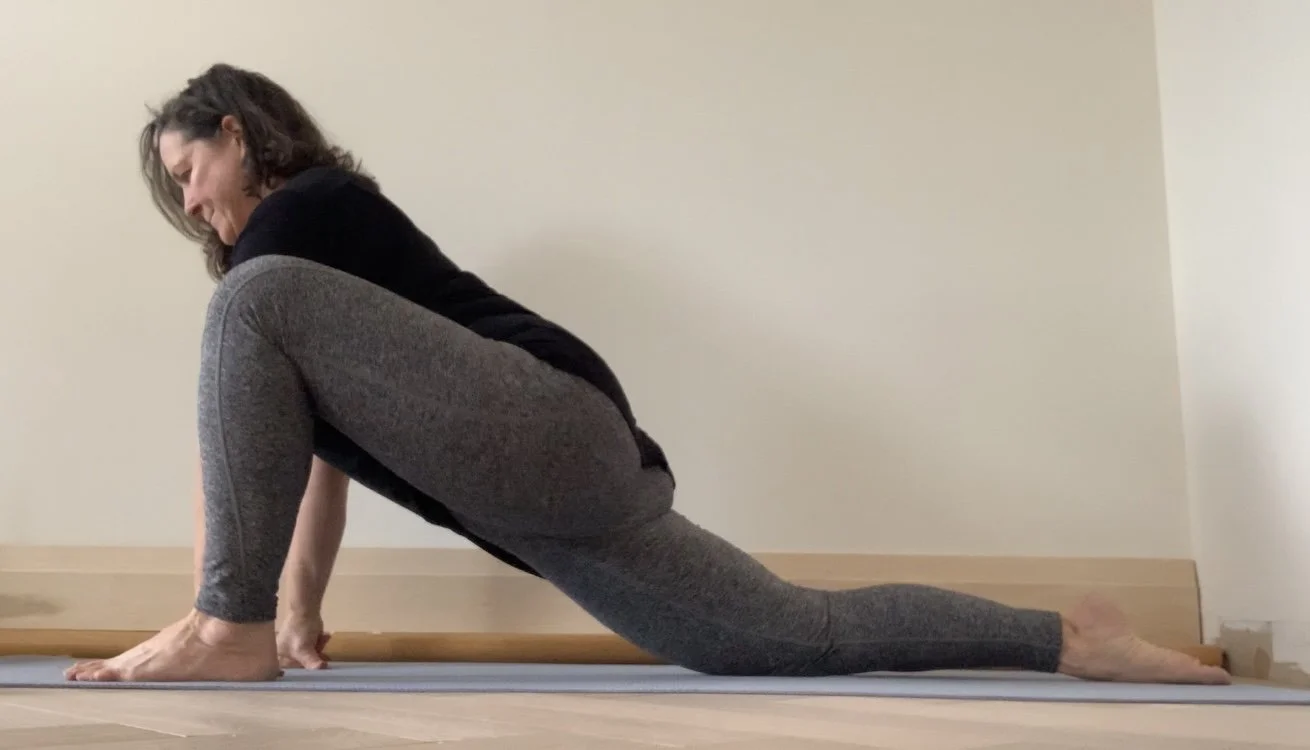Find Bliss with Yin Yoga and The Koshas
I find it fascinating that ancient Hindu texts continue to have relevance to our experience in modern society. Ancient texts identify a model for the human experience called the Koshas that continues to resonate today.
The Kosha Model proposes that an individual is made up of 5 layers, each contributing to our overall experience. Consider yourself to be composed of that nest, like an onion or nesting dolls. While the outer layers encapsulate and protect the inner layers, the inner layers provide support and structure for the outer layers. There is interdependency between each layer forming a complete and healthy whole.
Kosha is actually the Sanskrit word for envelope or sheath, each one being held or holding the others.
The annamaya kosha the physical or body sheath
The pranamaya kosha the energy sheath
The manomaya kosha the intellect and emotion sheath
The vijnanamaya kosha the wisdom or higher mind sheath
The anandamaya kosha the bliss sheath
The key to understanding yourself within the Kosha model is finding ways to see each layer of yourself to see how they operate on their own and how they interconnect with the other layers to create the whole. Yin yoga is an ideal way to slow down and “see each layer". Use your journal to record your experience and note trends over time.
Considering the koshas as you practice can assist in preventing distraction from the things that are truly and uniquely important. When we are connected with our deepest desires, we can begin to understand the overwhelming purpose of our lives. Knowing our purpose guides us in our choices creating a deep sense of satisfaction and fulfillment in our daily lives.
This yin practice incorporates one pose for each Kosha along with a statement for you to reflect on as you hold the pose. As you come out of the pose, you can use your rebound time to write down your thoughts, giving language to your experience.
PROPS
mat
block
blanket
Easy Seated Position (3-5 min)
Begin in an easy seat, comfortably seated on the mat. Feel free to sit up on a cushion or against a wall or on a chair. Bring one hand to your chest and one hand to your belly while placing your attention on your breath. Use these few moments to begin your practice and focus on yourself as a whole entity.
Spend 3-5 minutes seated with the focus on the breath.
The Body Kosha (Annamaya)| Happy Baby (3-5 min)
This first Kosha, the outermost layer, is often called the “Meat Sheath” because it refers to the flesh and bones of our body. The first pose in our practice is one where we feel a lot of sensation, to help us connect with the entirety of our body.
Lie on your back and bring your knees into your chest for a hug. You may stay in this pose or find your way into a happy baby pose by pointing your knees towards your armpits. Keeping your low back relaxed on your mat, begin to draw your knees down to the floor. You are looking to find a place where you feel a lot of sensation in your body, while remaining very relaxed. Hold onto your knees, your ankles or your toes to find the balance of relaxation and sensation.
Once you find your version of this pose, commit to stillness as your reflect on teh following statement:
I tune in to my physical body, give myself time to be silent and listen. I am grateful for it, and what it makes possible for me.
Remain in this pose for 3-5 minutes and take your time coming out of it to return to a seated position. Take a few moments to jot down in your journal any thoughts you might have had while holding this pose.
The Energy Kosha (Pranamaya)| Caterpillar (3-5 min)
The energy layer, just beneath the body kosha, is accessed through attention to the breath. Here we sit in a simple, seated forward fold to enhance the physical experience of the breath. Sit with your legs extended in front of you and slowly forward fold over your legs. Let your upper body become as relaxed as possible. Consider laying a bolster or cushion over your legs to rest your head on if that makes you more comfortable. As you hold this pose, draw your attention to your breath. You may feel a lightness in the back of your body, lifting you out of the pose on the inhale and then a sense of release as you exhale and fall further into the pose.
As you hold this pose and focus on your breath, reflect on the statement:
I inhale deeply and fully exhale. I inhale new energy and exhale to release. As I breathe in my body lightens as I breathe out my body softens and relaxes.
Remain in this pose for about 5 minutes. When you return to an upright seat, write a note in your journal about the energy and its role in your body.
The Emotional/Intellectual Body (Manomaya) | Dragon Pose (3 min each side)
The third kosha holds your thoughts and emotions. The judgements, decisions and feelings that we have on a daily basis.
From your seated position, move into table top pose and prepare for Dragon Pose. Bring your right foot to the outside of your right hand and allow your hips to sink deeply. You may choose to cushion your back knee with a blanket.
This pose can feel intense on the body and may elicit some strong thoughts or emotions. Resist the temptation to come out of this pose (always noting the difference between discomfort and pain - we never want to feel pain in our practice!) As you hold this pose, maintain your connection to your body and your energy and note the thoughts that come up. Note the way that our mind reacts to physical discomfort.Try not to engage in these thoughts, but begin to control your response to the situation.
As you hold this pose you may consider the following statement:
I breathe into stillness and just let thoughts come and go.I see how my thoughts and emotions affect my physical and energetic condition.
Hold each side for about 3 minutes before returning to a comfortable seat to record your reflections in your journal.
The Wisdom Kosha (Vijnamaya)| Sleeping Swan (5 min each side)
The fourth kosha holds your deeper wisdom. Sometimes referred to as instinct, gut feelings or experience.
Move into table or down dog in preparation for Sleeping Swan (or Pigeon Pose). Bring your right foot forward to rest on the pinky toe side of your foot behind your left wrist then lay your shin down so that you right knee is behind your right wrist. Don’t worry too much about what it looks like, we are more interested in sensation here. We want to relax into this pose while feeling a pleasant stretch in the body. You may choose to forward fold to rest your forehead on the mat, your arms or a pillow.
As we access the wisdom layer, our thoughts and emotions become organized. We see the interconnections of our layers of self and how they impact the way we move through the world and our responses to the flow of our life.
As you hold this pose consider the following statement:
In this moment I am a perfect and whole being. Everything I need is within me.
Hold this pose on each side for about 5 minutes. Then take a few minutes in a seated pose to record your thoughts.
The Bliss Kosha (Anandamaya)| Reclined Butterfly (5 min)
The innermost kosha, the Bliss Kosha can be described by a variety of words: soul, spirit, self and more. Consider each kosha in turn as you relax in this pose: the stretch of the body and the feeling of support from the mat, the feeling of the breath moving beneath your hands, the calm mind allowing the inner wisdom to emerge. As you hold this pose, note all 4 koshas supporting the deepest sense of self producing an overall feeling of Bliss.
Make your way onto your back for a reclined butterfly pose. Bring the souls of your feet together and let your knees fall open wide. Bring one hand to your chest and one to your belly. Use blankets and pillows to support your body in any way you like.
As you hold this pose, consider the following statement.
I am an embodied spirit.
Stay in this pose for 5 minutes. Take a moment to write your reflections in your journal
Savasana
Make your way into a final resting pose. You can take legs up the wall or another posture as it suits you. Just be sure to find a position that is completely relaxing.
Remain in savasana for as long as you have time for. Take your time finishing the practice and write any final thoughts you might have in your journal.
It is worthwhile to repeat this practice to note the changes in your experience as recorded in your journal over time.

















